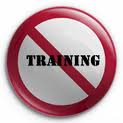The biggest, unchecked Business Disease – Behavioural Waste™
Organisations believe in leadership development as there are $billions invested in leadership development every year, made on the assumption that “better leaders get better results”. Some, more focused (maybe informed) investors focus their leadership programmes on engagement, assuming better leaders create more engaged employees and teams and that then leads to higher productivity, better results.
If leadership development programmes are an investment, what’s the ROI?
Why make assumptions when the facts are there, if you care to look?
Well one thing is true and has been unequivocally proven that changing and improving attitudes and behaviours will improve performance (1). So it’s great to know that all those $billions spent on leadership are based on having the right belief. It can work! And that is also true in every part of life and can simply be seen in athletes and sports people, where focused training, changing behaviours by doing something marginally different will increase performance. You only have to look at the stories behind Olympic and Paralympic athletes, broadcast on most TV networks, to see where they started and how they progressed. The whole idea behind terms like ‘marginal gains’ is nothing new but has been exposed to a much wider audience thanks to TV, the Press and social media.
But who notices those improvements in sports people can be replicated in business, or other areas of one’s life? What if you saw the Head Coach as the COO, driving the business forward?
Interestingly, books like “Winning” by Sir Clive Woodward demonstrate the processes that Sir John Whitmore (of coaching fame) and his team were practising in businesses way back in the 1970s and 1980s.
In sport, it’s also well known that talent isn’t enough and Woodward’s TCUP (Think Correctly Under Pressure) made the difference between winning and losing. The bottom line is that attitude and behaviour makes the real “sustainable” difference to performance.
If you changed your mindset and believed everyone were talented in your organisation, how would that change your thinking?
Now if that’s got you thinking differently, and prepared to take the first step, the burning question is…
Where do we start? Behavioural Waste
There’s lots of great advice from evidenced and relevant research that says mostly the same as Sutton and Rao (2014) in their book “Scaling up excellence: Getting to more without settling for less”, highlighted in the Harvard Business Review in 2014. They point out the intuitive good sense that before leaders attempt to adopt good practices, it is necessary to remove the bad; and that this can be done by
“… identifying and reducing destructive and negative attitudes and behaviours that block the adoption of necessary change.”
In other words, the importance of removing embedded avoiding and blocking behaviours before introducing innovative practices. The authors’ research found that negative interactions with bosses and co-workers have five times more impact than positive ones to the extent that bad behaviours usually swamp the good, undermining the “scalability” or wider adoption of new excellent practices. A key insight from this kind of thinking is the power of encouraging leaders and employees that they are “doing the right thing” when they start to focus not just upon their own needs and wants, but upon the people affected by their actions.
Eliminate or Reduce Behavioural Waste™ (BW) – the business disease
We could list all the negative behaviours and disruptive activities that could be in existence in your business. The 10 Fatal Leadership Flaws – Jack Zenger & Joseph Folkman (2009) – are all in that list.
But it’s easier to define them in what they are collectively –
Behavioural Waste™ – all forms of behaviour that divert energy, talent and resources away
from the personal or organisational purpose
Rao and Sutton and others have merely pointed out that (1) above also works in a business setting. Change (negative) behaviours and results improve, and you can now innovate, value-add and grow. Now the question is
“ How much Behavioural Waste™ have we and what do we do to get rid of it?”
Well the key is you don’t have to get rid of it and eliminate it. Reducing it so it doesn’t prolong and impact the business performance is good enough. Pareto’s 80-20 rule still exists here!
Organisations will have 3 forms of BW that can be quickly identified : Personal, Cultural and Systemic.
Each of these BW are business diseases and with the right diagnosis coupled with the right remedy, you can permanently get rid of them. A leader that operates their own agenda for personal gain, “do as I say not as I do”, or constantly uses management (MBA/MA) speak for effect are not the engaging, inspiring examples for your employees.
Next Steps?
Being a leader puts us all in a position of making decisions, but only those decisions that are ours to make. As you are still reading then there are now 4 choices:
- Free chapter of Recycling Behavioural Waste download – the business disease http://bit.ly/BusinessDisease
- Assess your own organisation’s BW http://bit.ly/MindFitFootprint
- Do something else
- Do nothing – keep doing what you’re doing and hope your medicine works
As ever the choice is always yours.
So what’s your choice? If you choose any of the above we’d like to have your feedback on what influenced your decision.







